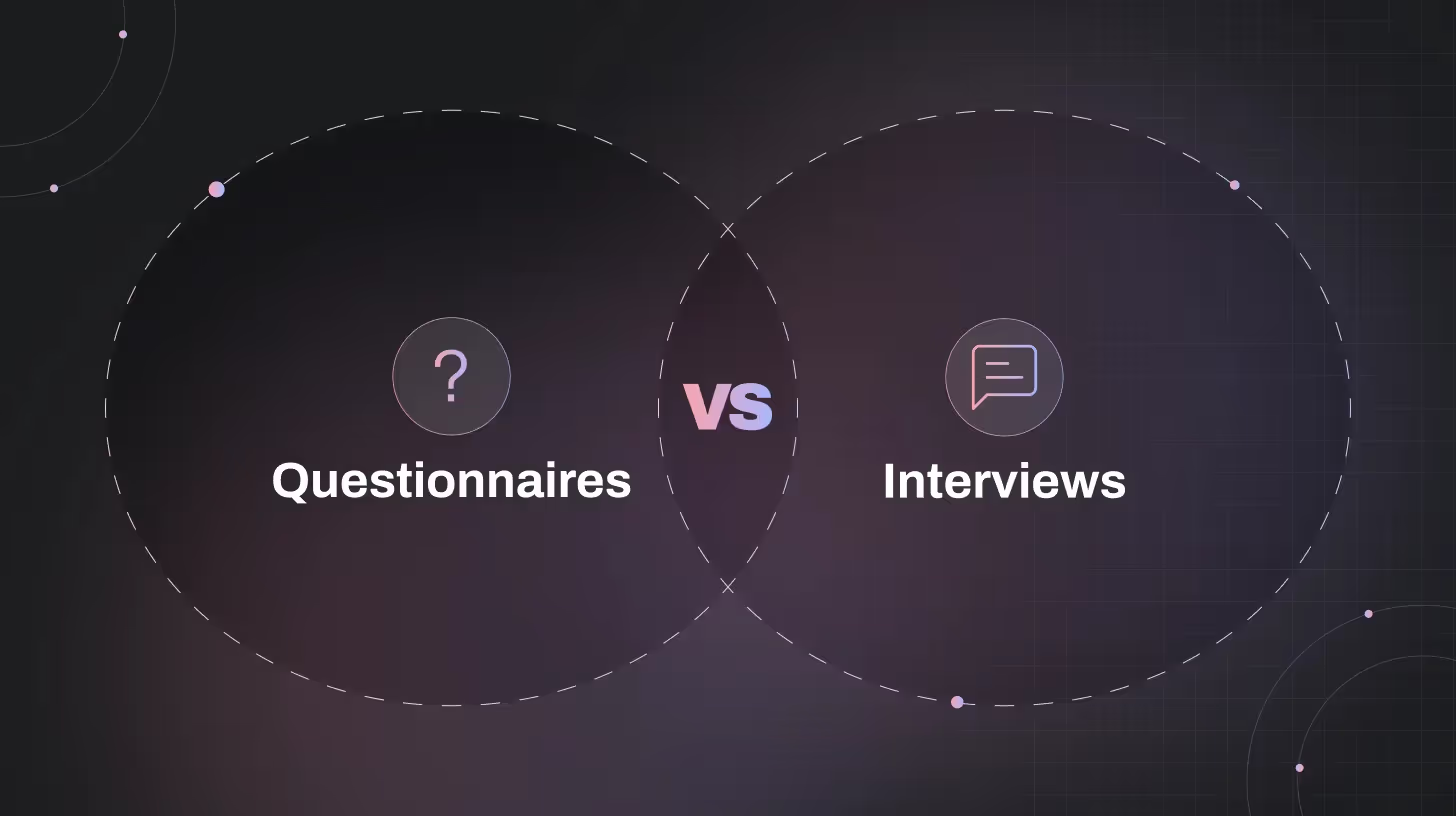The Product Idea Journey: Why Startup Core Values Matter Early

Tech news publications have been pouring out horror stories about imploding company cultures—places where companies left deep-rooted cultural issues to fester, and for some of them, leading to their ultimate demise.
But “culture debt,” where workplace issues accrue over time, is no new concept. Like any other type of debt, a company’s culture has to be thoughtfully managed and reduced. The truth is, you’re going to end up with a company culture no matter what. There’s no avoiding it. So the companies who put off the process of building a strong foundation for the culture they want to build will end up with something unpredictable and much more difficult to manage.
This is especially true during the early product idea journey, where everything from team norms to startup core values is being established. Ignoring culture at this stage can derail even the most promising product.
Your culture is one of the reasons people will join your company. It’s also the reason people will leave. So if you’re going to end up with a company culture anyway, why not proactively define the culture you want to develop and share those values with your earliest employees?
The first handful of people that join your team will buy into your values more than any other person that you hire later on. These teammates end up being your cultural beacons within the company. So if you define your core values early, you can enable your first hires—the people who are the most passionate about the company and the culture—to adopt the values and become cultural ambassadors as the company grows.
At UserTesting, we had a few one-liners that we would use for core values but we didn’t actually codify them until we were several years in. We didn’t intentionally create the culture we wanted until we were around 50 people. And while I’m happy that we ended up with a good culture, I wish we had codified those values earlier to prevent several painful years of defining and reinforcing the culture we wanted. That’s one of the reasons why we started defining our values early at Nuffsaid when it was only me and my co-founders Nick and Hari.
Here’s a step-by-step on how we brainstormed, evaluated, and finally landed on Nuffsaid’s three core values. Then, how to leverage company values to create team-specific values.
These values work became a cornerstone of our product idea journey, directly influencing how we built our team, product, and customer experience.
Capture leadership lessons, personal values, and inspiration
When Nick and Hari first joined, we went to lunch and started the value-creation process by listing off the things that were important to us. It was a broad, messy list and we didn’t leave anything out that came to mind. We jotted down lessons learned, concepts we found important in our personal work lives, and company values we liked and didn’t like from previous experiences.
It also helped that I’d been casually doing this exercise for about ten years: when a mentor said something that struck me or when I read something that I found remarkable, I jotted it down in my notes. And about two years ago, before starting Nuffsaid, I started writing down values and behaviors that I would lead with if I started a company.
(For those that might find it helpful for inspiration, here’s an edited version of that document.)
This moment was early in our product idea journey, where defining startup core values helped shape our mission before our product even launched.

Brainstorming company values at Nuffsaid
We combined my list with the one Nick, Hari, and I created and ended up with a list of ~100 behaviors, ideas, and values that we could start evaluating. Then we grouped them into themes and began the process of narrowing the list down.
Easy-to-remember values, backed by specific behaviors
When you have more than five values (I’ve seen companies with 10+), your employees aren’t going to remember all of them. Unless there’s a poster with the values taped on each desk, the company’s codified values are probably going to be rendered useless. Same goes for having values that are a full sentence. It’s hard to remember and keep top-of-mind.
But companies also risk having values that are too ambiguous. Take the companies with values like “Integrity,” for example. Or “Humble” and “Hungry.” How does a core value like “integrity” change your behavior at work? Sure, we all have a general sense of what integrity means. But in practice, if I’m an employee at this company, how should I make decisions differently than I would in my normal life? Without that clarity, values won’t change or improve company culture.
For company values to be actionable, each one needs to be broken down into specific behaviors that underpin the overarching idea. If you have the core value of integrity, you should think about what outcome you’re actually trying to get at. Articulate the outcome (the value), then point out specific behaviors you want to see. And if you can’t come up with three or four behaviors that support a specific value, it might be more of a behavior—explore ways to incorporate it under a different overarching value.
Identifying which items on our list were behaviors and which ones were outcomes was the most important and helpful step in evaluating our list of values.
For example, one thing on the original list that’s important to me is being direct (with respect). I value people who don’t beat around the bush. They don’t mince words. They are able to, without negative emotion, communicate with directness—they can even criticize without being negative. That’s something I want to see at Nuffsaid, and if my co-founders and I hadn’t taken as hard of a look at each of our values, we’d probably have “be direct with respect” as a top-tier value.
But as we looked at “be direct with respect” alongside other values, we realized that being direct is really just a behavior. It’s not a value: it’s a behavior that you do in order to support an overarching outcome. What is the outcome we want when we tell people to be direct?
At the same time, Nick, Hari, and I agreed that we didn’t want to work with people who don’t listen to other people’s opinions. We don’t like people who spend all their time advocating for their own points of view. And while “listening” is certainly a positive behavior, it’s not actionable on its own and doesn’t really guide people toward the outcome we’re actually trying to get at.
We realized that “being direct” and “listening” were both about building lasting long-term relationships with each other. So that idea, the “build 30-year relationships,” became the value. Listening and being direct (now articulated in a more clear way) are listed as behaviors that underpin that value.
These specific behaviors helped us not only shape our startup core values but also aligned our team as we prepared for early product launch steps.
Codify how decisions should be made
We also wanted to make sure we were clear about how decisions are made at Nuffsaid.
And I don’t mean what kind of decision-making framework the company uses like RACI, ARPA or RAPID. People need to know the company’s philosophy about who gets to make decisions, the required thinking before a decision is accepted, and what happens when there are disagreements.
When people don’t know how decisions are made, constant deadlocks and differing opinions prevent forward progress and results. When a new employee joins a company of a substantial size and isn’t told how decisions are made, they’re going to be wondering about things like how budget decisions are made, or who owns decisions around specific aspects of their job. There’s a good chance you’re setting them up for a lot of wasted time and failed attempts to move something forward in a way that doesn’t fit with how your company works.
For every decision that needs to be made, we provide a framework to make that decision in a Nuffsaid way. For example, we’ve prioritized the importance of different types of information used in decision making. Personal opinions and anecdotes are the least valuable data. We value the opinions and experience of the team over the individual. More valuable than our opinions are credible 3rd party data like research papers or industry reports. The most valuable data is actual customer data, and we try to get enough customer data to make every major company decision.
Equally as important, we outlined what happens when there are disagreements about decisions. When there are conflicts, how will the company overcome those quickly? For example, we have a philosophy that decisions should be pushed as close as possible to the people that are doing the actual work—we empower people closest to the customer and the product, and their team leads. But, that will ultimately cause disagreements, so we have an escalation process.
These frameworks became essential during the early product launch steps, ensuring alignment and speed, especially important as we chose to build in public and share our journey openly.
Values should be leveraged to improve the interview process
Teams should be able to leverage the company’s values in the interview process. If you can’t identify questions for each value to score candidates on how closely they match the culture you’re trying to foster, it’s worth spending a few more iterations to make the values more focused and clear.
Our hiring process has six steps, one of which is a cultural interview. We’ve listed questions for each value: we give candidates a question or scenario we want them to respond to, and we’ve documented what a poor, mediocre, and excellent response looks like for each question. (We also regularly revisit this scorecard to see if anything can be improved.)
Here’s an example scenario of what a good, mediocre, and excellent response looks like for our value, “We lead with good intent, and assume others do as well.”

The three values we landed on
With time and a lot of back-and-forth iterations, we’ve landed on three core values:
- We build 30-year relationships.
- We act quickly.
- We’re accountable for our team and customer results.

How to tailor company values for the team level
The above are our core company values, which serve as overarching, guiding themes for how we work. Departmental values tend to be more tactical; department heads need to take the company values and tailor them for the people who are doing specific categories of work.
Take a product designer as an example. A designer at Nuffsaid will probably look at our company values and say, “ok, I’m going to build 30-year relationships. That’s a great thing to keep in mind and work toward, but tell me how I should be doing my job.”
The department head, and in our case that’s Product, should design values that are much more focused on guiding the people in product roles, while still supporting the overarching company values. At Nuffsaid, our Product team has 1. product values, 2. design principles, and 3. customer-focused release process. Together, these explain how people working in this department are expected to work.
Our design principles are Simple, Fast, and Smart. Every feature we build must solve a customer problem using those three core principles. Each of these three principles are articulated clearly, with specific metrics to track how the team is doing across those values.
When designing team values, take things you believe in and want to see your team doing, and codify those.
These tactical layers helped us operationalize our startup core values across functions as we scaled. And since we chose to build in public, these values served as our compass—internally and externally.
Conclusion: Make Values the Foundation of Your Product Idea Journey
Building a successful startup isn’t just about shipping features—it’s about shaping the people, principles, and decisions that power your business. Your product idea journey should be rooted in clearly defined startup core values that guide everything from hiring and internal collaboration to your product launch steps.
And if you’re choosing to build in public, those values become even more important. They’re not just internal guidelines—they’re your public compass. The earlier you define and operationalize your values, the easier it becomes to build a strong, resilient culture that grows with your product.
In the end, your values aren’t just words on a wall—they’re the playbook your team will rely on every day. Make them count.
















.svg)